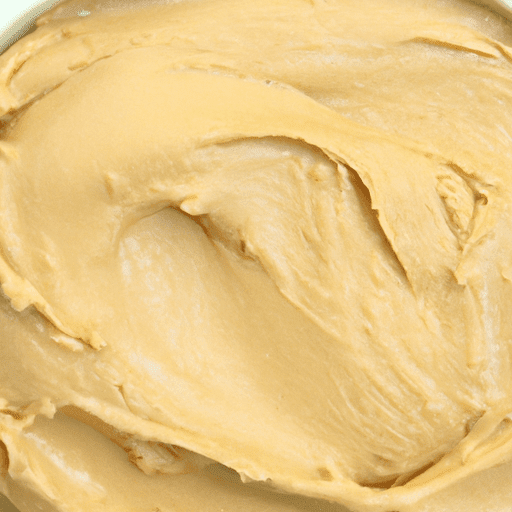The Versatile and Delicious Soy Margarine: A Must-Have in Your Kitchen
If you’re looking to explore new dairy-free alternatives or simply want to try something different in your kitchen, soy margarine is worth considering. With its creamy texture, rich flavor, and numerous practical uses, soy margarine has become a staple ingredient for many home cooks and professional chefs alike. In this article, we will delve into the world of soy margarine, discussing its taste, common uses in cooking, nutritional value, and some interesting history and facts.
Taste and Texture
Soy margarine offers a similar taste and texture to traditional dairy-based butter. It has a smooth and creamy consistency that spreads effortlessly on bread, rolls, or toast. The flavor profile of soy margarine is mildly sweet and slightly nutty, with a subtle hint of saltiness. This versatile ingredient serves as an excellent substitute for butter in almost any culinary application.
Common Uses in Cooking
The uses of soy margarine in cooking are seemingly endless. You can use it in both sweet and savory dishes to enhance taste, texture, and overall mouthfeel. Here are some popular applications:
1. Baking
Soy margarine is a fantastic choice for baking. It helps create moist cakes, tender cookies, and flaky pastries. Whether you’re making a batch of chocolate chip cookies or a buttery pie crust, substituting soy margarine for butter can yield impressive results.
2. Spreading and Topping
Thanks to its creamy consistency, soy margarine spreads smoothly onto your favorite baked goods. Whether you fancy a warm slice of toast in the morning or a freshly baked muffin in the afternoon, soy margarine will be your go-to choice to add richness and flavor. You can also use it as a delicious topping for vegetables, steamed rice, or a baked potato.
3. Sautéing and Frying
Soy margarine’s high smoke point makes it an excellent option for sautéing and frying. It adds flavor to your favorite stir-fries and lends a beautiful golden-brown color to pancakes, French toast, or grilled sandwiches.
4. Sauces and Roux
When making sauces or roux, soy margarine can be used as a substitute for butter as it provides the necessary fat content and texture. From classic béchamel to rich gravy, soy margarine will help you achieve creamy and velvety results.
Nutritional Value
Soy margarine offers a range of nutritional benefits and is often considered a healthier alternative to butter. It is naturally cholesterol-free and low in saturated fat. Furthermore, soy margarine is a source of omega-3 and omega-6 fatty acids, which play a crucial role in supporting heart health. Additionally, many brands fortify their soy margarine with essential vitamins and minerals, such as vitamin E and vitamin B12.
Interesting History and Facts
Soy margarine has an intriguing history that dates back to the early 20th century. It was initially developed as a dairy-free alternative to butter for individuals with lactose intolerance or dietary preferences. Over time, soy margarine gained popularity among health-conscious individuals and those looking for plant-based options. Its versatile nature and ability to mimic the taste and texture of butter made it a prime choice in kitchens worldwide.
Today, soy margarine continues to evolve, with various brands offering different formulations to cater to specific dietary needs and preferences. Whether you follow a vegan lifestyle, have dietary restrictions, or simply enjoy experimenting in the kitchen, soy margarine is a fantastic addition to your pantry.
In conclusion, soy margarine is a versatile and delicious ingredient that can replace butter in numerous culinary applications. With its creamy texture, mild flavor, and nutritional benefits, soy margarine offers a convenient and tasty option for both cooking and baking. So, why not give it a try and unlock a whole new world of dairy-free possibilities in your kitchen?
Here are some interesting facts about soy margarine:
Origin: Soy margarine is a plant-based spread made from soybean oil. It was developed as a dairy-free alternative to traditional butter or margarine made from animal fat.
Common Uses: Soy margarine is commonly used as a spread on bread, toast, or other bread products. It can be melted and used in baking as a substitute for butter. It can also be used in cooking, frying, and sautéing.
Nutritional Benefits: Soy margarine is often chosen as a dairy-free alternative due to its lower saturated fat content compared to butter. It is also free from cholesterol and contains no lactose. Some brands of soy margarine are fortified with vitamins such as vitamin A, D, and E. It provides a source of polyunsaturated and monounsaturated fats and can be a good source of omega-3 fatty acids, depending on its formulation.
Unique Properties and Significance: Soy margarine has a similar texture and taste to traditional margarine or butter. However, its unique property lies in its plant-based origin, making it suitable for vegans and individuals with dairy allergies or intolerances. Soy margarine has gained popularity as a versatile and cruelty-free alternative in cooking and baking, and it has contributed to the growing options available for people with dietary restrictions or preferences.




Use the share button below if you liked it.
It makes me smile, when I see it.